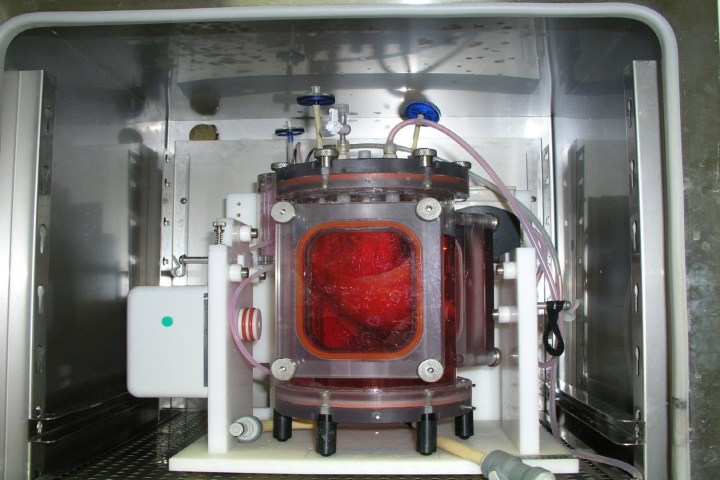
For the first time ever, lungs grown in a lab have been successfully transplanted into pigs, allowing them to breathe normally with no medical complications. The breakthrough achievement opens up the possibility of using similarly bioengineered lungs for humans in need of a lung transplant.
“This is the first time someone has transplanted a whole bioengineered organ,” Joan Nichols, associate director of the Galveston National Laboratory at University of Texas Medical Branch, told Digital Trends. “We also demonstrate amazing tissue growth and development of the vascular system. There was no infection, no rejection of tissues, and animals tolerated the bioengineered lung transplant very well.”
To make the lab-grown lungs, the researchers first created a scaffold which came from an unrelated donor pig. They achieved this using a process in which all cells and blood are removed from the organ, leaving just a skeleton. Next, the researchers removed a single lung from a pig as the cell source to produce a bioengineered tissue-matched lung for transfer. This was treated with growth factor-filled hydrogels and nanoparticles to prepare the scaffold for the addition of cells, which came from a single lung taken from each of the “patient” pigs 30 days before the operation. The finished bioengineered lung — featuring cells from the patient — was then transplanted into the pigs.
Six bioengineered lungs were created in total, although only four animals were capable of receiving them due to surgical issues.
“The lungs continued to grow and develop in each animal’s body,” Nichols said. “The growth factors help the cells to survive, and also help us make sure that when we add each type of cell — vascular or blood vessel or lung-specific cell — onto the scaffold that the cells stay where we need them to be.”
Previous work by the team has shown that it is possible to produce a pediatric-sized lung which could be used in human patients. To get to the point of clinical trials, Nichols estimated an additional five to eight years of preclinical testing is needed. Once this is complete, however, the results could be a game-changer in terms of ending organ transplant waiting lists.
A paper describing the work was recently published in the journal Science Translational Medicine.


